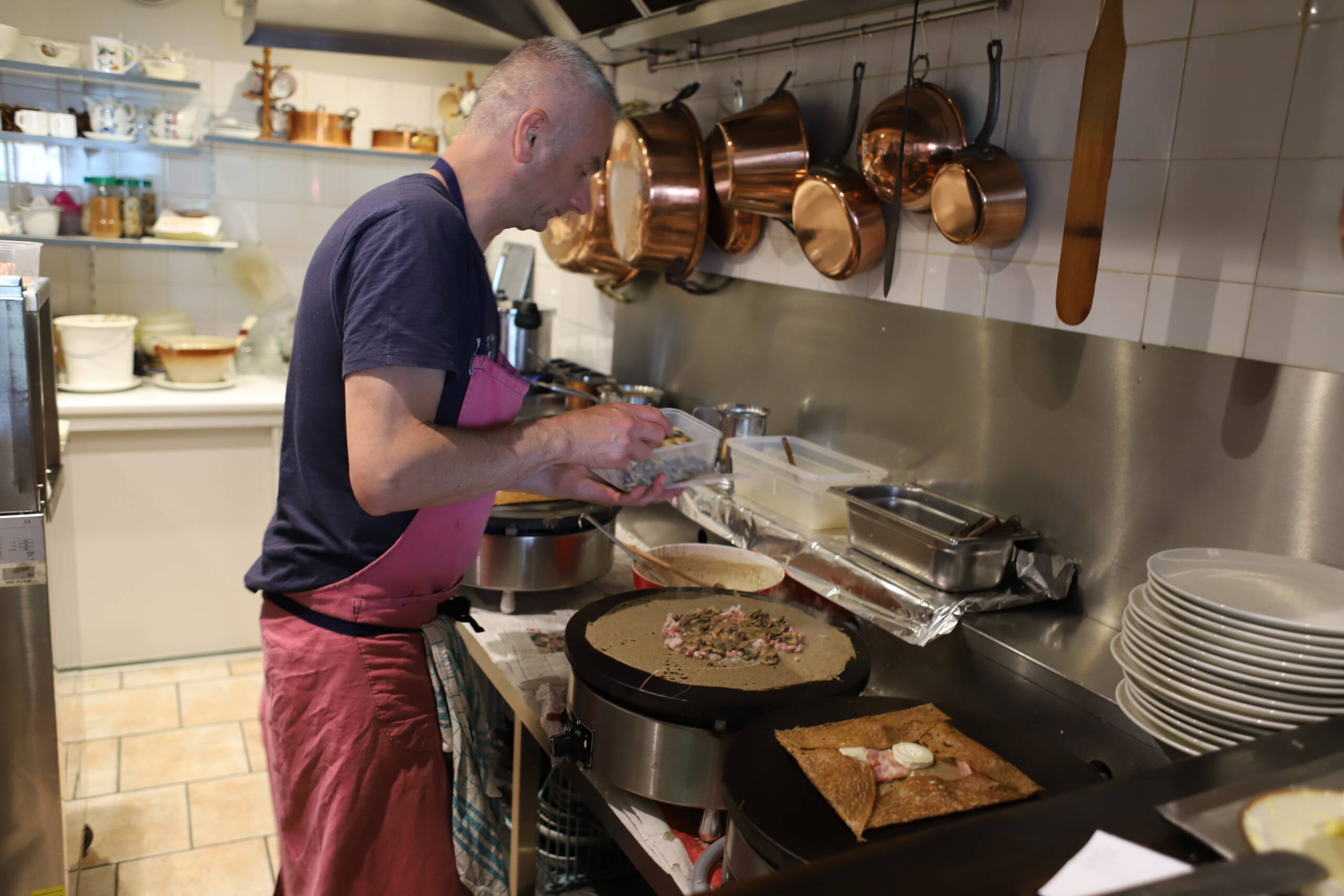There’s always a moment when a place reveals its true identity—not through monuments or postcards, but through something far quieter. In Nantes, that revelation smells like warm buckwheat and melted butter. The man in the photo stands at his workstation with the calm focus of someone who has repeated the same gesture thousands of times, yet still treats each galette as if it deserves its own personality. His pink apron hangs a little crookedly, his navy shirt softened from years of washing, and his stance suggests a rhythm as natural as breathing.
The kitchen around him feels lived-in, warm, and slightly theatrical without trying. Copper pans—polished but not overly so—hang from hooks along the tiled wall, catching glints of light like little trophies of everyday craft. On the counters are tubs, bowls, ladles, and folded towels—nothing fancy, just tools of a trade carried with quiet pride. In the center of it all, the galettière (the round crepe plate) radiates heat, turning raw batter into something distinctly Breton.

The galette cooking in front of him looks mid-transformation: a thin dark sheet of buckwheat dotted with mushrooms and ham, slowly tightening, crisping, caramelizing around the edges. Next to it lies a finished one—folded into its signature square with the filling peeking through like a small invitation. A dollop of soft cheese sits at its center, half melted, half holding its shape—as if waiting to surrender the moment the fork touches it.
And this—this scene—is so unmistakably Nantes. Unlike Paris, where food can feel theatrical, or Lyon, where cuisine wears its grand reputation like a medal, Nantes belongs to Brittany’s soul: humble ingredients, big flavor, and tradition carried with matter-of-fact confidence. Galettes here aren’t “reinvented” or “elevated.” They already are what they need to be.
Buckwheat flour, water, salt—nothing more—but behind that simplicity hides a century of apprenticeship. The resting of the batter, the exact temperature of the plate, the patience to let the galette reach that perfect moment where it’s both crisp and soft—that’s where the magic hides. And watching him work, you can sense he doesn’t think about these steps consciously anymore. They’re muscle memory, instinct, repetition turned into intuition.
Sometimes the most remarkable scenes in travel aren’t grand landscapes or museums—they’re small kitchens where craft is alive, where food feels less like a recipe and more like shared heritage. In Nantes, a savory galette isn’t just something to eat—it’s a quiet statement that tradition still matters, that the simplest things, when done with care, are enough.
And honestly, watching him, you get the sense he already knows that. I like to imagine that if someone asked him why he cooks this way, he’d shrug and say something like, “Parce que c’est comme ça”—because that’s how it’s done. Not defensive—just matter-of-fact, as though explaining gravity.
There’s a quiet magic in moments like this—where craftsmanship becomes routine, where tradition feels alive without being theatrical. And maybe that’s what makes this kitchen feel unforgettable. It isn’t trying to impress. It’s simply being itself—warm, intentional, and deliciously human.
Leave a Reply